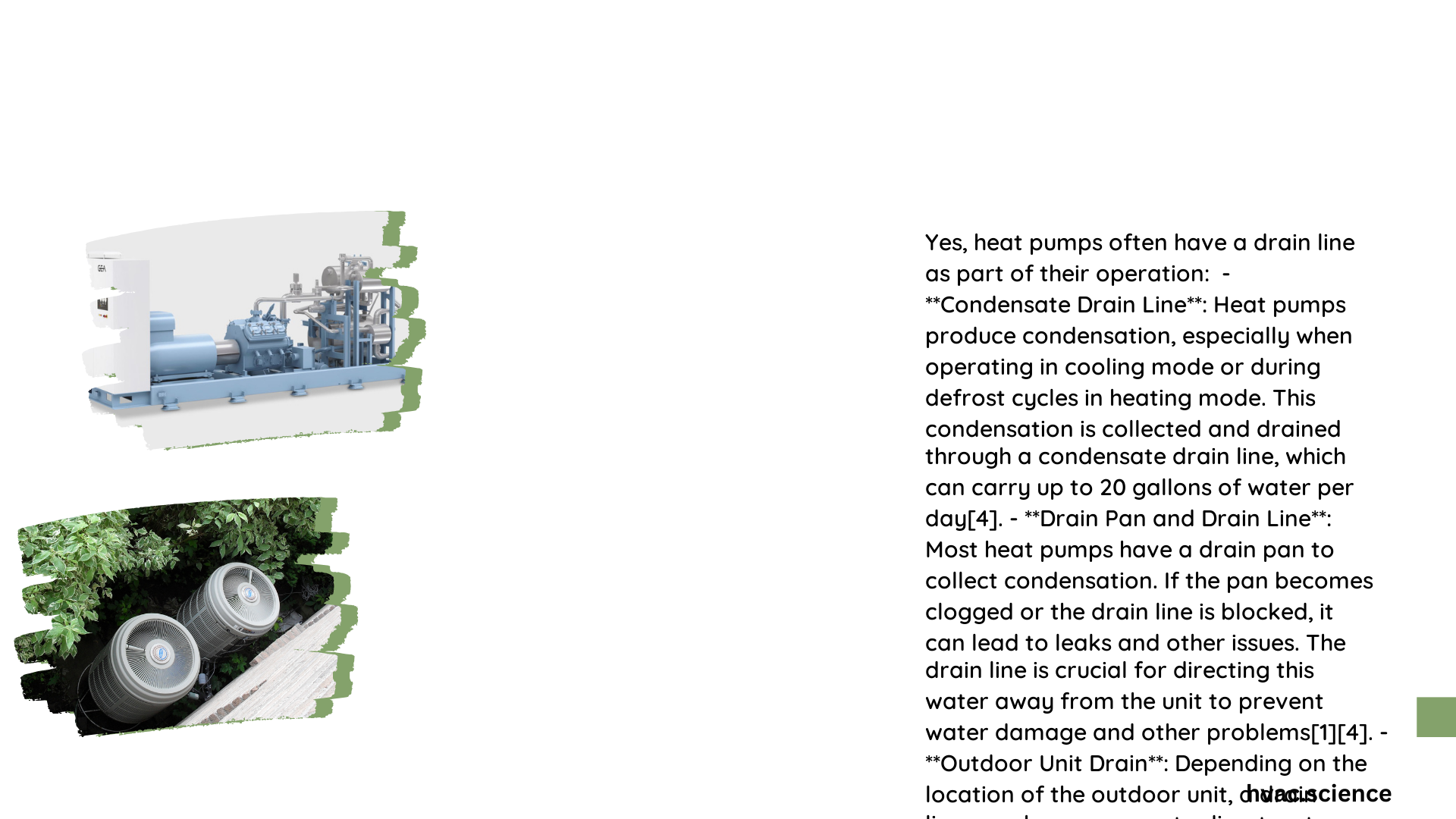Heat pumps do have drain lines, which are crucial components for managing condensate produced during the cooling cycle. These lines collect water from the evaporator coil and safely remove it from the system, preventing water damage and ensuring optimal performance. Understanding the function, installation requirements, and maintenance of heat pump drain lines is essential for homeowners to keep their systems running efficiently and avoid potential issues.
What is the Purpose of a Heat Pump Drain Line?
The primary function of a heat pump drain line is to remove condensate produced during the cooling process. As warm air passes over the cold evaporator coil, moisture in the air condenses and collects in a drain pan. The drain line then carries this water away from the unit, typically to the outside of the building or into a designated drainage system.
Key Functions:
- Removes excess moisture from the system
- Prevents water damage to the unit and surrounding areas
- Maintains optimal system efficiency
What Materials are Used for Heat Pump Drain Lines?

Heat pump drain lines are typically constructed using corrosion-resistant materials to ensure longevity and proper function. The most common materials include:
- PVC (Schedule 40)
- ABS
- CPVC
- Copper
Each material has its advantages, but PVC is often preferred due to its durability, cost-effectiveness, and ease of installation.
What are the Sizing Requirements for Heat Pump Drain Lines?
Proper sizing of drain lines is crucial for efficient water removal. The size requirements typically depend on the capacity of the heat pump system:
| System Capacity | Minimum Drain Line Size |
|---|---|
| Less than 10 tons | 3/4″ inside diameter |
| 10 tons or more | 1″ inside diameter |
It’s important to note that the drain line must always be at least as large as the drain connection on the equipment.
How is a Heat Pump Drain Line Installed?
Proper installation of a heat pump drain line is critical for its effectiveness. Here are the key installation requirements:
- Slope: The drain line must have a minimum slope of 1/8″ per foot (or 1% slope) to ensure gravity-assisted drainage.
- Support: The line should be supported every 4 feet horizontally and every 10 feet vertically to maintain proper slope and prevent sagging.
- Cleanout: A cleanout must be installed to allow for clearing blockages without cutting the drain line.
- Traps and Vents: Traps may be required according to manufacturer specifications, and venting after the trap is recommended to prevent airlocks and siphoning.
What Maintenance is Required for Heat Pump Drain Lines?
Regular maintenance of heat pump drain lines is essential to prevent clogs and ensure proper function. Here are some key maintenance practices:
- Regular Inspections: Conduct quarterly inspections to ensure the drain line is clear and properly sloped.
- Cleaning Techniques:
- Use a wet/dry vacuum or plumbing snake to clear blockages
- Check for and correct any dips or sagging in the drain line
- Recommended Tools:
- Wet/dry vacuum
- Plumbing snake
- Level tool
- Drain cleaning chemicals (if necessary)
What are Common Challenges with Heat Pump Drain Lines?
While drain lines are essential, they can present some challenges:
- Installation Costs: Materials and labor for installation can vary, with PVC pipe costs ranging from $1 to $5 per foot.
- Accessibility Issues: Tight spaces or attic installations can make access challenging for installation and maintenance.
- Common Failure Points:
- Improper slope leading to clogs
- Lack of proper support causing sagging
- Failure to install traps or vents as required
By understanding these potential challenges, homeowners can better prepare for installation and maintenance of their heat pump drain lines.
How Can Homeowners Prevent Drain Line Issues?
To avoid problems with heat pump drain lines, homeowners can take several preventive measures:
- Ensure proper installation by a qualified HVAC professional
- Schedule regular maintenance checks
- Keep the area around the outdoor unit clear of debris
- Consider installing a float switch to shut off the system if water backs up
- Flush the drain line periodically with a vinegar solution to prevent algae growth
By following these guidelines, homeowners can maintain an efficient and problem-free heat pump system, ensuring optimal performance and longevity of their drain lines.
